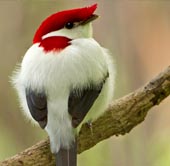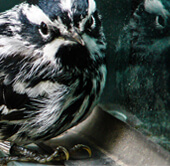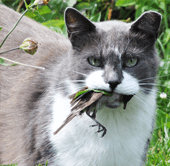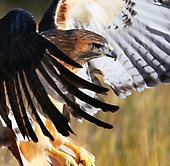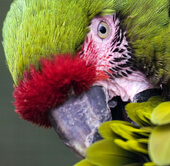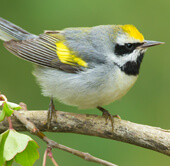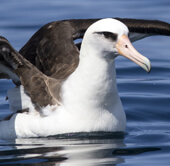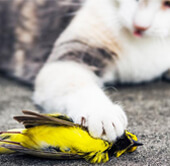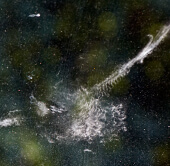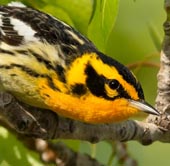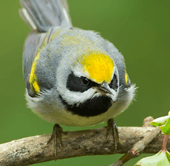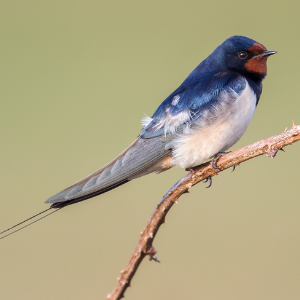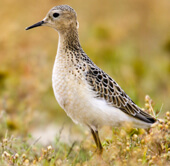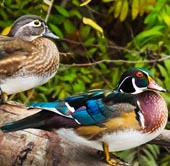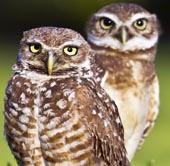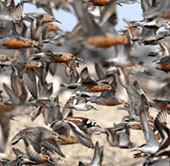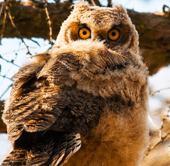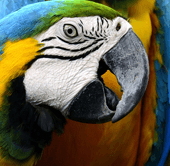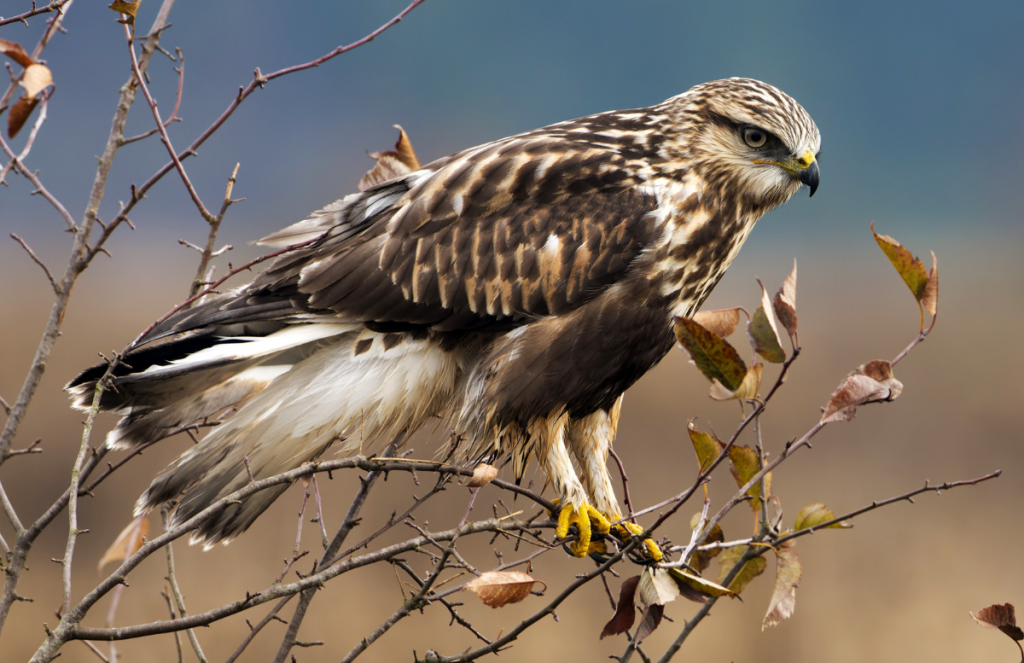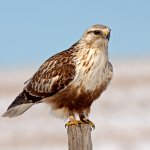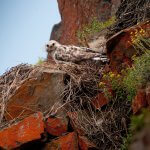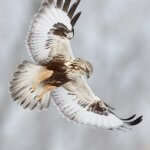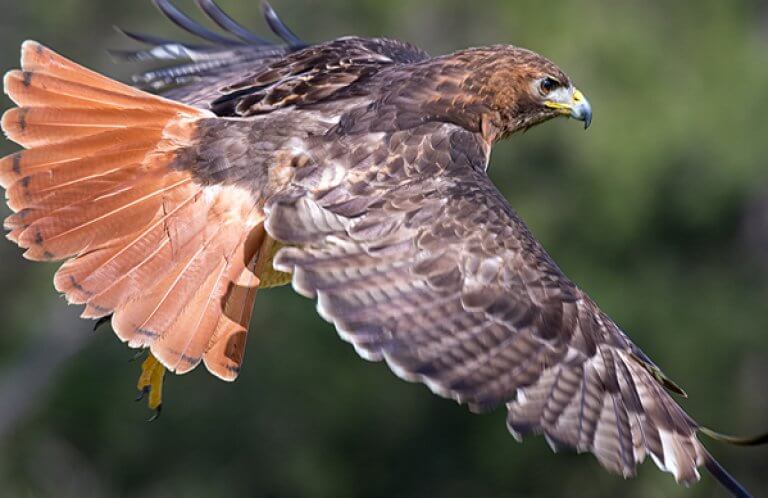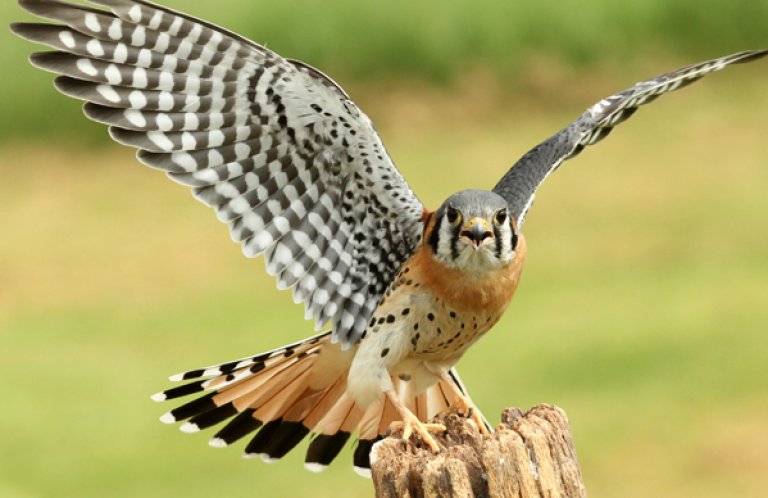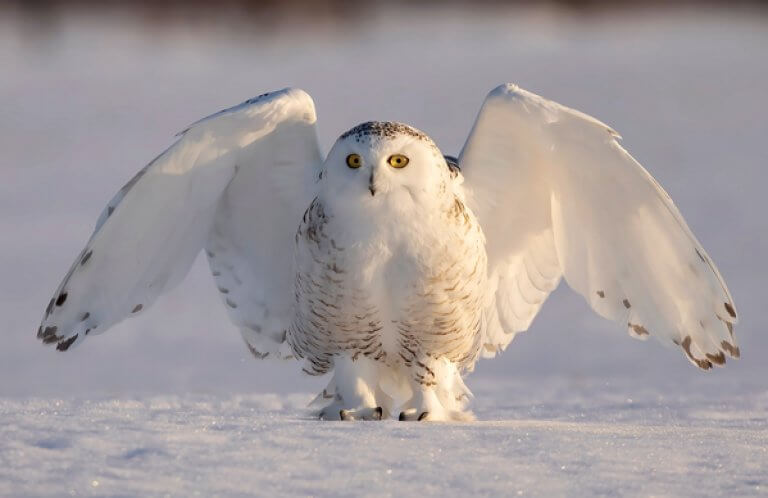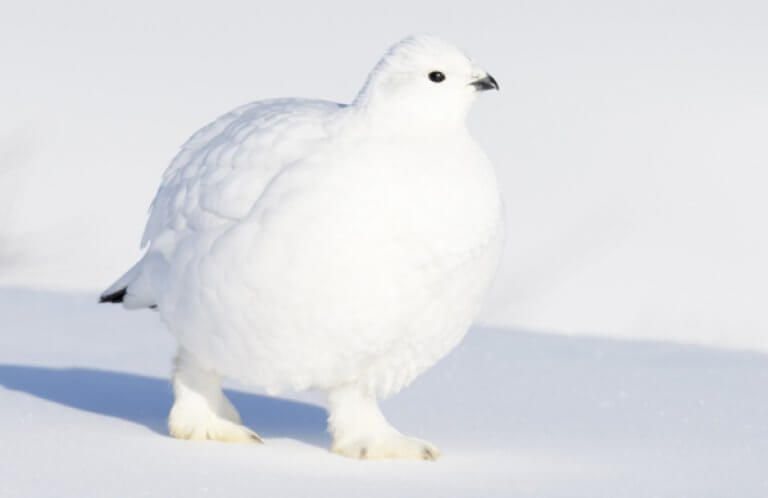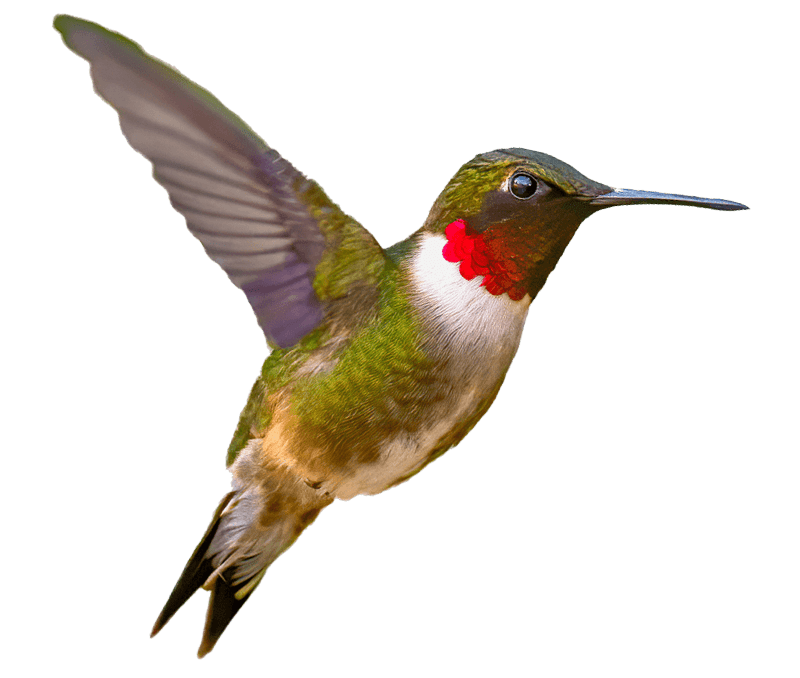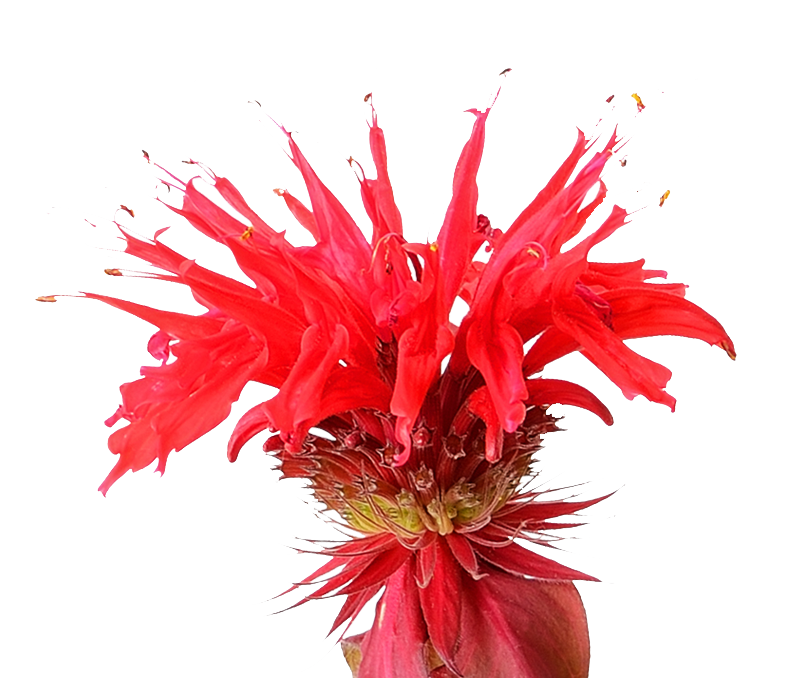About the Rough-legged Hawk
The Rough-legged Hawk is a raptor that breeds in Arctic and high subarctic regions around the world, migrating to more southerly regions each year to delight intrepid winter birders. The name "Rough-legged" refers to this raptor's fully feathered legs, a feature shared by the Ferruginous Hawk and Golden Eagle.
A good-sized raptor, the Rough-legged Hawk is about the size of a Red-tailed Hawk, but has a lankier appearance, with long, narrow-looking wings that appear plank-like in flight, a noticeably smaller beak, and feathered legs. It has a habit of hovering as it hunts over open spaces, rather like an overgrown American Kestrel, and often perches on the tips of branches and shrubs, where similar-sized hawks rarely alight.
The plumage of this hawk is diverse, with light and dark color morphs (the light morph being more common) as well as intermediate variations. A light-morph Rough-legged Hawk shows a pale head and underparts, a contrasting black belly band, and large black patches on the feathers referred to as secondaries (the “wrist” portion of a bird's wing) that are especially visible in flight. The rarer dark morph of Rough-legged Hawk is black, with contrasting pale flight feathers and a tail that has multiple black bands, with the widest one at the tip.
Besides its feathered legs, the Rough-legged Hawk also has a noticeably small beak. These features illustrate a biological principle known as Allen's Rule, which states that the appendages of endothermic (warm-blooded) animals in colder climates are relatively smaller than those in warmer climates. Smaller, feathered features minimize bare surface areas and help reduce heat loss, critical requirements for survival in freezing polar regions. Allen's Rule can be seen in other Arctic-dwelling birds such as the Snowy Owl, Arctic Tern, and Willow Ptarmigan.
Songs and Sounds
Generally silent away from its breeding grounds, the Rough-legged Hawk gives a loud, shrill, descending alarm call near its nest, sounding like kyaaaaah or kee-eer.
Calls:
Alarm calls:
Rough-legged Hawk Breeding and Feeding
The Rough-legged Hawk is a widespread but rather hard-to-find species, as it breeds in remote places. Winter sightings can be sporadic, as numbers of this hawk tend to fluctuate with the availability of prey. They are graceful flyers with a tendency to perch on poles and fences, and even on the slender, uppermost branches of trees.
A small rodent specialist, the Rough-legged Hawk preys primarily upon lemmings, voles, mice, rabbits, and ground squirrels. It may also take ptarmigan and a variety of other small birds. During the winter, it also feeds on carrion, particularly road-killed animals. This hawk hunts from atop a perch or on the wing. In flight, it often hovers facing the wind, abruptly dropping down in a vertical plunge to pick off prey.
The Rough-legged Hawk is monogamous during its breeding season, and some pairs stay together on the nonbreeding grounds, too. Males perform circular courtship flights to attract a female, and also perform "sky-dance" displays, soaring high and diving down steeply.
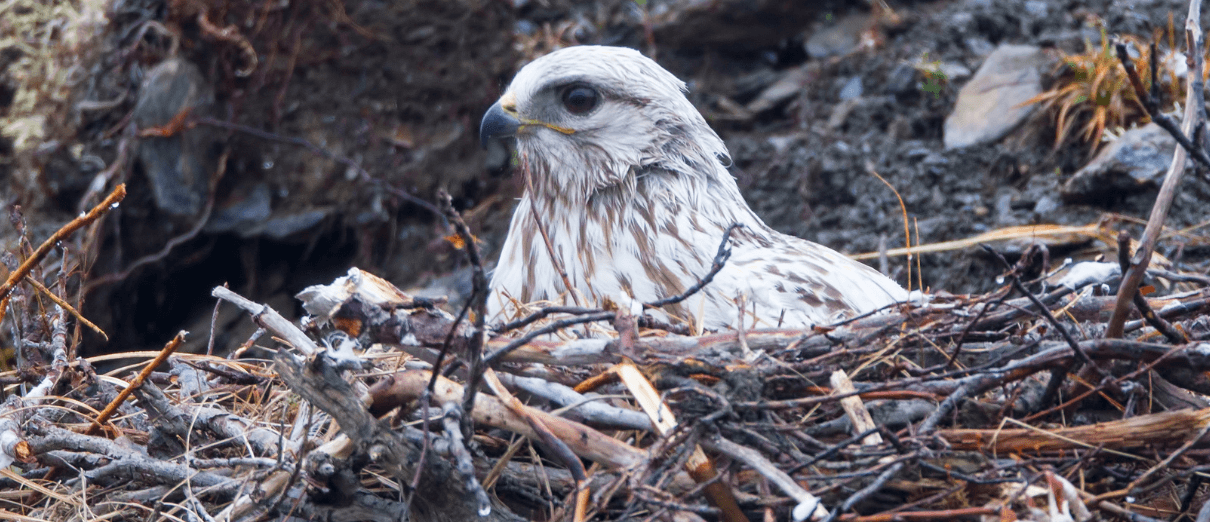
The male Rough-legged Hawk selects a nest site high on a cliff, rocky outcrop, or riverbank, preferably on open tundra. This species sometimes will nest high in a tree, or more rarely, on human-built structures such as towers, buildings, or bridges. The male brings material while his mate builds the nest, a bulky structure of sticks lined with grasses, hair, and feathers.
The female Rough-legged Hawk lays a clutch of two to seven eggs, with the number varying depending on the availability of rodent prey. She incubates the eggs for 28 to 31 days. Her mate brings her food as she sits, and sometimes tends the eggs if she leaves the nest for short periods. She broods the young after hatching, while the male continues to bring food. As the young grow, both parents begin to supply prey. The young Rough-legged Hawks leave the nest after five to six weeks, and remain near their parents for approximately another month. They reach adulthood after two years.
Region and Range
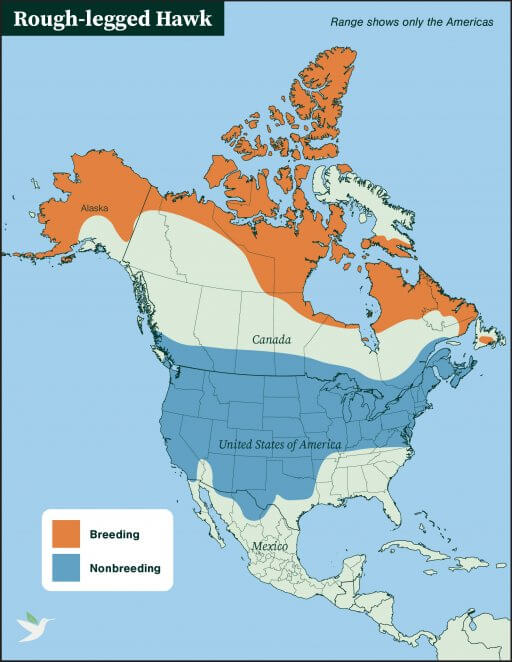
The Rough-legged Hawk breeds in Arctic regions across the world. In North America, its breeding range includes Alaska and Canada. During the nonbreeding months, it migrates to the southern border regions of Canada and across a wide swath of the United States south to California, Arizona, New Mexico, Texas, Missouri, Kentucky, and Maryland.
In Eurasia, the Rough-legged Hawk breeds from northern Scandinavia east across the Siberian Arctic to the Pacific Ocean. It migrates to spend the nonbreeding season in Central Europe and Asia.
Nonbreeding populations of Rough-legged Hawks fluctuate regionally from year to year, with “invasions” occurring when numbers of its small rodent prey increase rapidly. Similar boom-and-bust cycles can be observed in other raptors, such as the Snowy Owl and Northern Hawk Owl, as well as in seed-eating birds like the Evening Grosbeak and Red Crossbill.
Conservation
Variable and extreme weather patterns caused by a changing climate mean habitat loss and degradation on the Rough-legged Hawk's Arctic breeding grounds, making it more difficult for these birds to find nesting and hunting areas.
Like many raptors, the Rough-legged Hawk is vulnerable to collisions with poorly sited wind turbines, which are becoming more common throughout their nonbreeding range. Fatal collisions with vehicles and powerlines pose other significant threats.
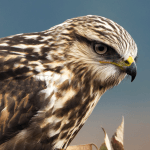
Help support ABC's conservation mission!
The Rough-legged Hawk, like many raptors, was once persecuted by farmers and ranchers. Although hunting the Rough-legged Hawk is now illegal, it is still sometimes shot in some areas. It is also accidentally killed in traps set for other animals.
ABC is acting in three key areas — mitigation, resilience, and adaptation — to combat the effects of climate change and build a sustainable, long-term future for birds such as the Rough-legged Hawk.
ABC encourages Bird-Smart wind energy, an approach to clean energy projects that minimizes risks to birds and other wildlife. We identify the areas most critical to birds and guide wind developers to support safer siting. And, we continue to advocate for policies that prioritize best practices in project planning and implementation.
ABC's policy team is working in the U.S. to ensure that birds get the funding, resources, and protections they need. We urge our members to join the effort to advocate for the preservation of essential bird conservation programs.
Get Involved
Policies enacted by the U.S. Congress and federal agencies, such as the U.S. Fish and Wildlife Service, have a huge impact on migratory birds. You can help shape these rules for the better by telling lawmakers to prioritize birds, bird habitat, and bird-friendly measures. To get started, visit ABC's Action Center.
Living a bird-friendly life can have an immediate impact on migratory birds in the United States. Doing so can be as easy as adding native plants to your garden, avoiding pesticides, and keeping cats indoors. To learn more, visit our Bird-Friendly Life page.
American Bird Conservancy and our Migratory Bird Joint Venture partners have improved conservation management on more than 8.5 million acres of U.S. bird habitat — an area larger than the state of Maryland — over the last ten years. That's not all: With the help of international partners, we've established a network of more than 100 areas of priority bird habitat across the Americas, helping to ensure that birds' needs are met during all stages of their lifecycles. These are monumental undertakings, requiring the support of many, and you can help by making a gift today.

